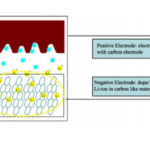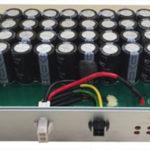For operating and backup power and energy storage, engineers can choose among batteries, supercapacitors, or “best of both” hybrid supercapacitors. Just as with rechargeable batteries, supercapacitors need proper management to optimize their performance and avoid mishaps. In many ways, the supervisory requirements for both are similar but there are some differences. Vendors of power-management ICs […]
supercapacitors
Energy storage by the Farad, Part 2: Supercapacitors & batteries
For operating and backup power and energy storage, engineers can choose among batteries, supercapacitors, or “best of both” hybrid supercapacitors. The previous part of this article established the context for supercapacitors and explained their structure in simplistic terms; obviously, this is a component with deep physics, chemistry, materials-science considerations, and manufacturing issues. The first widely […]
Energy storage by the Farad, Part 1: Supercapacitor basics
Engineers can choose between batteries, supercapacitors, or “best of both” hybrid supercapacitors for operating and backup power and energy storage. Many systems operate from an available line-operated supply or replaceable batteries for power. However, in others, there is a need in many systems to continually capture, store, and then deliver energy to power the system. […]
Supercapacitor line now ranges from coin cell, radial form factors, large snap-in types
New Yorker Electronics has announced its distribution of the newly expanded Cornell Dubilier line of Supercapacitors. Additional capacitance values and cell sizes have been added to its already extensive supercapacitor platforms, the DGH 2.7 volt and DSF 3.0-volt series. The company’s product line now ranges from board-mountable coin cell types to radial form factors […]
Super-caps cover 0.5 to 600-F range at up to 3.0 V
The DGH 2.7-V and DSF 3.0-V series supercapacitors (aka EDLCs or ultracapacitors) are used to supplement rechargeable batteries or as replacements for batteries in a diverse range of applications. These new components add powerful options for engineers. According to Brendan Andrews, Cornell Dubilier Business Unit Manager, “Our technology is used in a wide variety of […]
Flexible wire-like supercapacitors can be built into power cords
Capacitech Energy’s Cable-Based Capacitor (CBC) technology is a flexible supercapacitor that stores energy in a wire-like form factor designed to be built inside of power cords. It can also be used to offset capacitors from the circuit board to the wiring infrastructure to reduce the size of electronics. Cabled-Based Capacitors can be connected in series […]
Supercapacitors operate at 3 and 6 V
A new series of higher-voltage and high-energy-density supercapacitors, called DSF Supercapacitors, offer a notable jump in voltage rating over typical supercapacitors to 3.0 WVdc for a single component and 6.0 WVdc for a dual-pack device. This higher voltage spec results in greater energy densities, which in turn saves space and may reduce the number of […]
What’s new in electrolytic capacitors and supercapacitors for energy harvesting
By Suzana Jankuloska, Product Manager at KEMET Corporation Capacitors developed for energy-harvesting applications bring improvements to equipment of all types and sizes, from directly powered IoT devices to grid-connected generators Nothing new under the sun? Ambient energy has been present in Earth’s ecosystem since the beginning of time. Humans have a long history of finding […]
Supercapacitor system design considerations
Supercapacitors can deliver more: More power density, more Farads, more cycle life, and so on. But they also demand more complex solutions to realize optimal performance. Among the many design considerations are managing supercapacitor discharge, optimizing supercapacitor charging, and, in the case of series configurations of supercapacitor modules, providing effective voltage balancing between cells. Properly […]
Supercapacitor specifications and IEC/EN 62391–1
When correctly used, supercapacitors can support high power levels, high pulse power loads, and long-term back-up power needs. Understanding the nuances of supercapacitor specifications is the key to maximizing these performance capabilities. There is some level of standardization for supercapacitor sizes, for example, a 10x30mm can supercapacitor is generally 10 Farads across the industry. Some […]











